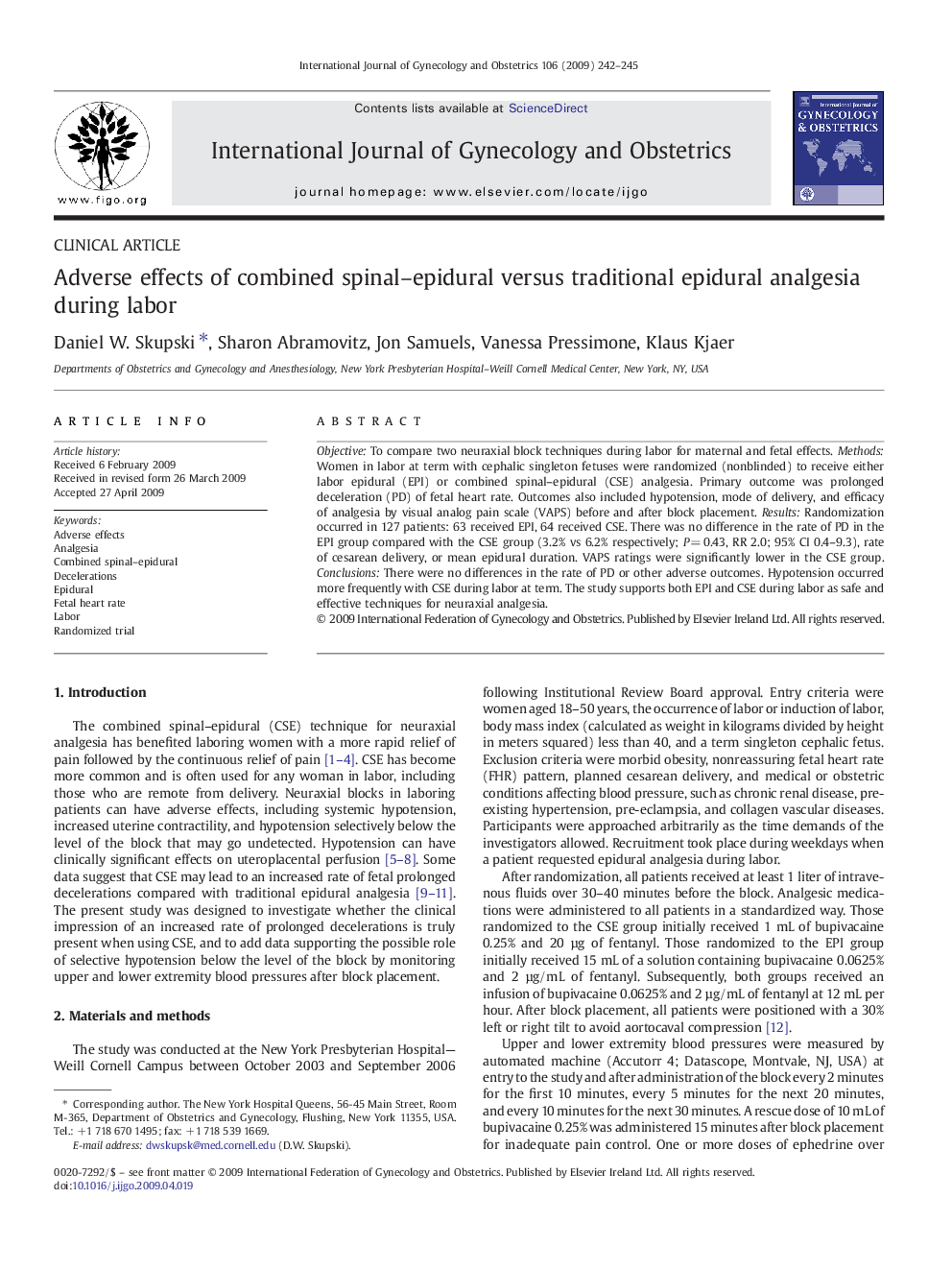| کد مقاله | کد نشریه | سال انتشار | مقاله انگلیسی | نسخه تمام متن |
|---|---|---|---|---|
| 3953796 | 1600397 | 2009 | 4 صفحه PDF | دانلود رایگان |

ObjectiveTo compare two neuraxial block techniques during labor for maternal and fetal effects.MethodsWomen in labor at term with cephalic singleton fetuses were randomized (nonblinded) to receive either labor epidural (EPI) or combined spinal–epidural (CSE) analgesia. Primary outcome was prolonged deceleration (PD) of fetal heart rate. Outcomes also included hypotension, mode of delivery, and efficacy of analgesia by visual analog pain scale (VAPS) before and after block placement.ResultsRandomization occurred in 127 patients: 63 received EPI, 64 received CSE. There was no difference in the rate of PD in the EPI group compared with the CSE group (3.2% vs 6.2% respectively; P = 0.43, RR 2.0; 95% CI 0.4–9.3), rate of cesarean delivery, or mean epidural duration. VAPS ratings were significantly lower in the CSE group.ConclusionsThere were no differences in the rate of PD or other adverse outcomes. Hypotension occurred more frequently with CSE during labor at term. The study supports both EPI and CSE during labor as safe and effective techniques for neuraxial analgesia.
Journal: International Journal of Gynecology & Obstetrics - Volume 106, Issue 3, September 2009, Pages 242–245